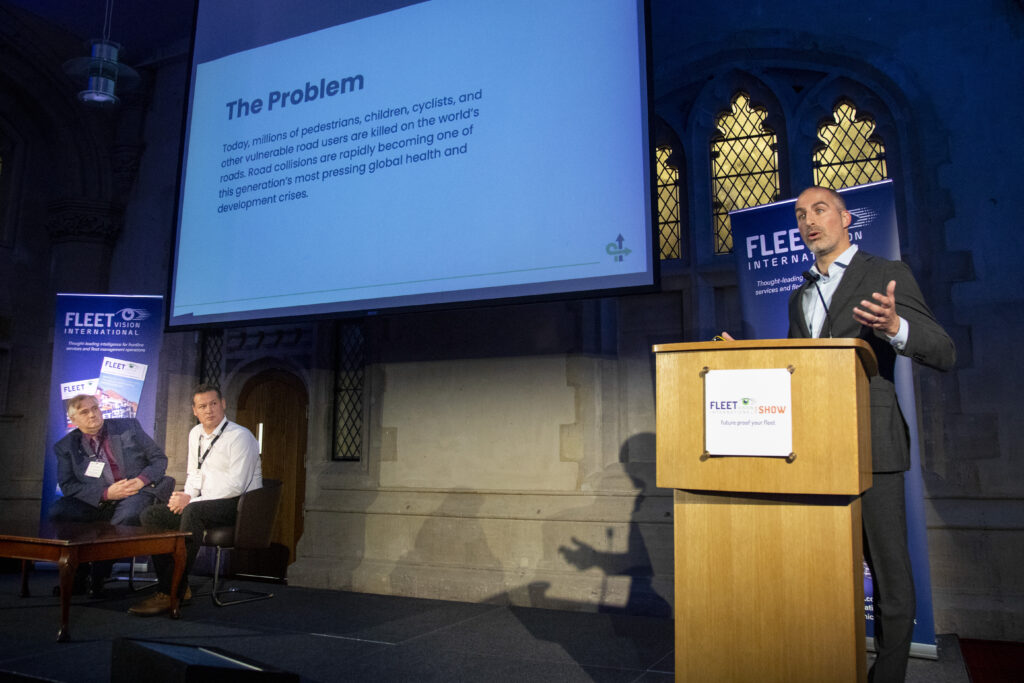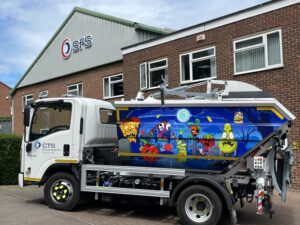That innovative public-private road safety partnerships have the potential to develop effective solutions and save lives was underlined by a joint talk from VisionTrack, Together for Safer Roads, and the City of New York at Fleet Vision International – THE SHOW on April 27, 2023.
Peter Goldwasser, CEO of Together for Safer Roads, put the road safety challenge in context. ‘Today, millions of pedestrians, children, cyclists, and other vulnerable road users are killed on the world’s roads. Road collisions are rapidly becoming one of this generation’s most pressing global health and development crises.
‘Our role at TSR is to create programmes, infrastructure and policies to unite people and share knowledge, data, and technology to help cities and communities improve. We work with the public and private sectors and CBOs, and this investment in cross-sector collaboration is improving road safety outcomes and saving lives.’
Peter gave an overview of TSR’s essential programmes, including Focus on Fleet Safety. ‘Small to mid-size fleets account for roughly 88% of commercial fleets, but these often can’t develop internal safety systems. So this programme is geared to these small fleets using insights from companies such as VisionTrack, expertise from cities, and industry best practices.’
Direct Vision is another initiative that aims to create a rating system for trucks similar to London’s Direct Vision standard. ‘Our Truck of the Future (TOTF) programme works with cities and companies to equip their fleets with technology that mitigates the problem of poor vision from large vehicles putting vulnerable road users at risk.’
Charles Morriston explained that VisionTrack became involved in TOTF after being selected to provide AI technology and support to TSR’s Direct Vision programme. ‘The solution is state-of-the-art hardware and software that provides fleet vehicles with greater blind-zone detection and visibility, and a vulnerable road user detection system to provide 360-degree vision and real-time feedback on imminent risks and near-misses.’
Charles explained that critical factors in creating such programmes include using the public-private partnership model and running pilots. ‘These are critical for government buy-in. It is important that implementation and adoption are flexible and that you align your definitions of success. You also need to capture data about what’s happening.’
‘TOTF technology is running on ten trucks from the NYC Department of Parks and Recreation and one truck at the Department of Sanitation,’ said Eric Richardson, NYC Deputy Chief Fleet Management Officer. ‘New forms of driver alerting, in-cab screens, and video telematics are being used for the first time in these trucks. We must understand the balance of safety benefits and possible driver distractions and mitigate over-reliance on technology. The evaluation of new technology also includes calibration of near-miss alerting for urban environments to minimise the number of alerts a driver gets while maximising additional safety potential. Driver acceptance is also key.’
NYC has found that video and alerts provide a better understanding of drivers’ environments. Footage can enhance training by giving examples of real-life experiences. ‘Video combined with telematics helps us better understand the circumstances of an exception alert or when a possible collision is recorded.’




